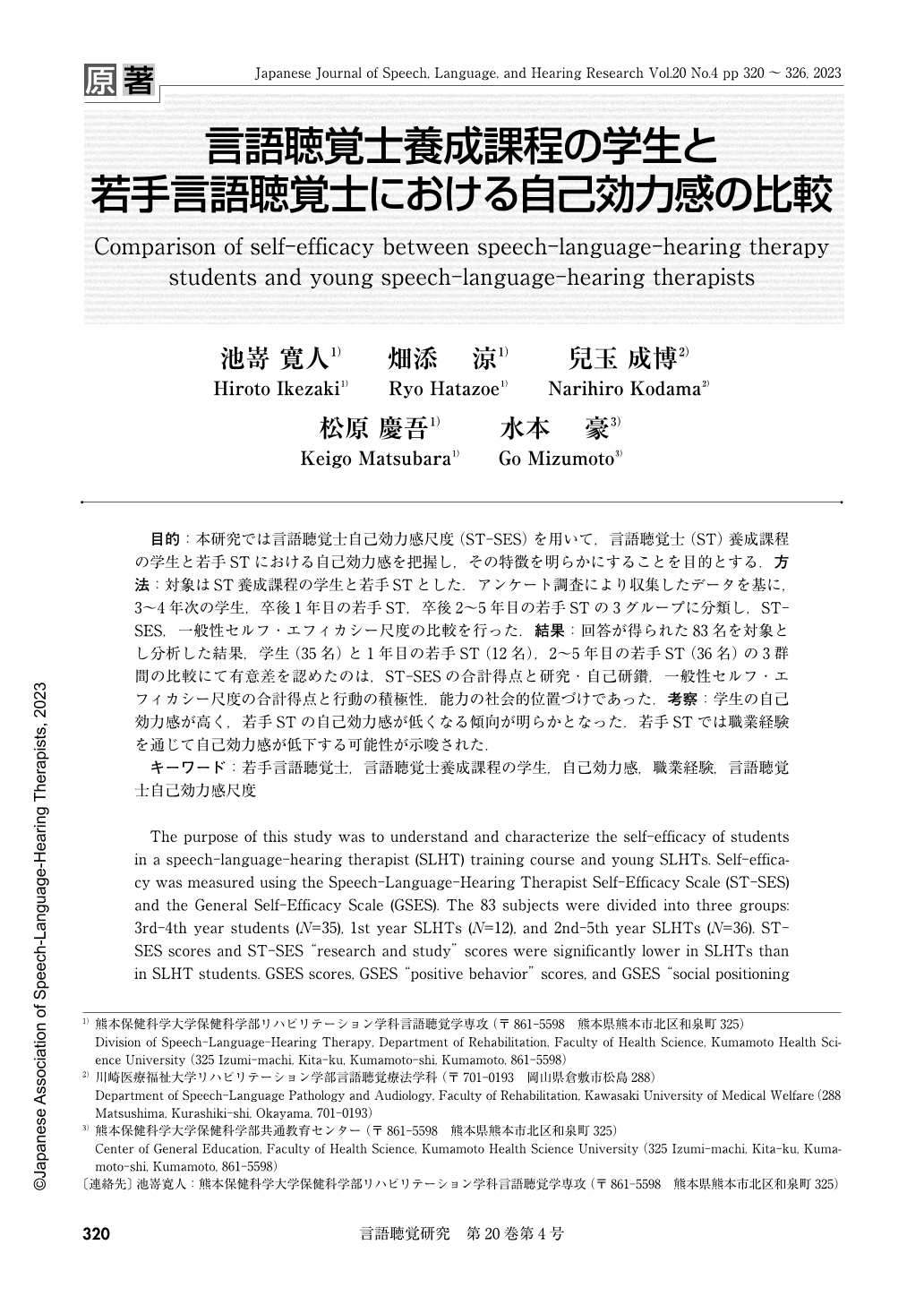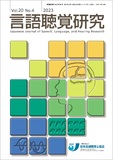Japanese
English
- 有料閲覧
- Abstract 文献概要
- 1ページ目 Look Inside
- 参考文献 Reference
目的:本研究では言語聴覚士自己効力感尺度(ST-SES)を用いて,言語聴覚士(ST)養成課程の学生と若手STにおける自己効力感を把握し,その特徴を明らかにすることを目的とする.方法:対象はST養成課程の学生と若手STとした.アンケート調査により収集したデータを基に,3〜4年次の学生,卒後1年目の若手ST,卒後2〜5年目の若手STの3グループに分類し,ST-SES,一般性セルフ・エフィカシー尺度の比較を行った.結果:回答が得られた83名を対象とし分析した結果,学生(35名)と1年目の若手ST(12名),2〜5年目の若手ST(36名)の3群間の比較にて有意差を認めたのは,ST-SESの合計得点と研究・自己研鑽,一般性セルフ・エフィカシー尺度の合計得点と行動の積極性,能力の社会的位置づけであった.考察:学生の自己効力感が高く,若手STの自己効力感が低くなる傾向が明らかとなった.若手STでは職業経験を通じて自己効力感が低下する可能性が示唆された.
The purpose of this study was to understand and characterize the self-efficacy of students in a speech-language-hearing therapist (SLHT) training course and young SLHTs. Self-efficacy was measured using the Speech-Language-Hearing Therapist Self-Efficacy Scale (ST-SES) and the General Self-Efficacy Scale (GSES). The 83 subjects were divided into three groups:3rd-4th year students (N=35), 1st year SLHTs (N=12), and 2nd-5th year SLHTs (N=36). ST-SES scores and ST-SES “research and study” scores were significantly lower in SLHTs than in SLHT students. GSES scores, GSES “positive behavior” scores, and GSES “social positioning of competence” scores were significantly lower in SLHTs than in SLHT students. The results from this survey indicate that SLHT students tend to have high self-efficacy, while young SLHTs tend to have low self-efficacy. There is a possibility that young SLHTs may experience a decline in self-efficacy through work experience.

Copyright © 2023, Japanese Association of Speech-Language-Hearing Therapists. All rights reserved.


